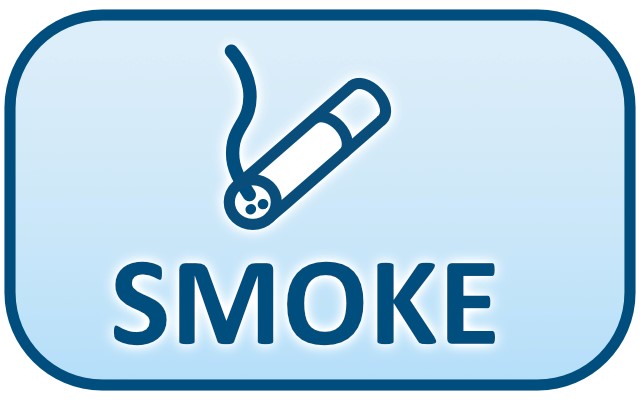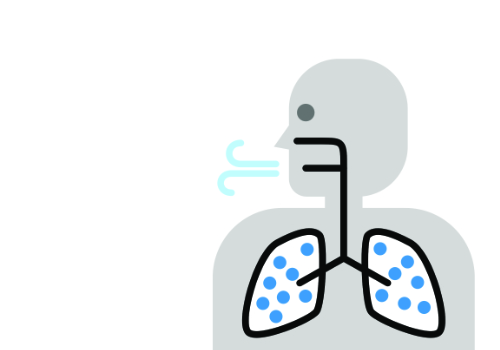Ventilation of cigarette smoke

While smoking in restaurants is already taboo, some clubs, bars and pubs have switched to “private club” status, so customers can smoke. How to ventilate smoking rooms to keep the air clean but not waste money? How often should ventilation be used? The owners of such places certainly have a lot to think about, especially when the opinions of the guests differ to some extent… In the Czech Republic, restaurants are no longer smoking, but what about private clubs, bars, pubs? There, too, you need to ventilate.
Lots of smoke also bothers smokers
Regarding the intensity of ventilation, non-smokers would answer that it should be ventilated all the time. Smokers don’t mind a little smoke, but the moment they start to get short of breath, the clouds of tobacco smoke start to bother them too. So how can we resolve the issue of ventilation in restaurants so that there is sufficient fresh air but not unnecessary ventilation?
The solution is a sensor that can sense the concentration of substances produced by burning cigarettes.
Fumes from burning a cigarette
It is well known that the burning of cigarettes produces various pollutants that that are not good for human health. More than 4 000 types of such chemicals have so far been identified in tobacco smoke.
In general, the combustion products of burning tobacco can be divided into several groups, namely:
- toxic gases
- aromatic hydrocarbons
- alkaloids
- heavy metals
- particulate matter.
The substances of interest are those that can be evaluated relatively easily using electronic sensors and then used to control ventilation systems.
Alkaloids – basic organic compounds
Alkaloid = a substance from the group of nitrogenous basic substances with a strong, often poisonous effect on the human body. The most important alkaloid contained in tobacco smoke is nicotine, with a content of around 1 to 4 mg per cigarette. When cigarette smoke is inhaled, it enters the brain through the bloodstream within seconds.
Toxic gases
CO – Carbon monoxide
The burning of tobacco produces a number of toxic gases, the most important of which is carbon monoxide – CO. It is a colourless, tasteless and odourless gas with a high ability to bind to red blood colour (haemoglobin) more than 200 times higher than oxygen and is also highly toxic. It prevents the transfer of oxygen through the blood from the lungs to the body, causing asphyxiation.
NO2 – Nitrogen dioxide
Another important toxic gas in terms of its negative impact on humans is nitrogen dioxide – NO2. It can easily pass from the lungs into the blood and can cause problems especially for children and sensitive individuals, for example, those suffering from asthma. For them, a concentration of nitrogen dioxide ten times lower than for healthy individuals is considered safe. Nitrogen dioxide irritates mucous membranes, causes burning eyes, breathing difficulties and headaches.
Formaldehyde
Another toxic gas in tobacco smoke is formaldehyde, a colourless gas with a pungent smell that is carcinogenic (effects that can cause cancer), causes irritation of mucous membranes and respiratory problems, and causes headaches. Formaldehyde can cause asthma, bronchitis, skin inflammation and eye irritation in susceptible persons.
Aromatic hydrocarbons and heavy metals
It is a wide range of different chemicals such as naphthalene, phenanthrene and anthracene. Heavy metals are also present in trace amounts in tobacco smoke. Of those dangerous to health, these are mainly nickel, cadmium and arsenic.
Solid tar particles
The tobacco smoke that wafts from a burning cigarette is made up of tiny solid particles known as tar particles. When tobacco smoke is inhaled, it is carried into the lungs, up to the lung chambers, where it settles and forms a black coating on the smoker’s lung tissue.

Cigarette smoke sensors ADS-SMOKE
For the purposes of monitoring air quality for cigarette smoke pollution, the aromatic hydrocarbons carbon monoxide and hydrogen are important. These substances can be indicated by sensitive semiconductor sensors.For the purpose of monitoring air pollution in smoking areas, we offer ADS-SMOKE sensors.
These sensors are based on the electrochemical principle and show high sensitivity even to very low concentrations of gaseous pollutants found in cigarette smoke. On the front of the sensor, a control wheel allows the level of ventilation switching to be adjusted.




